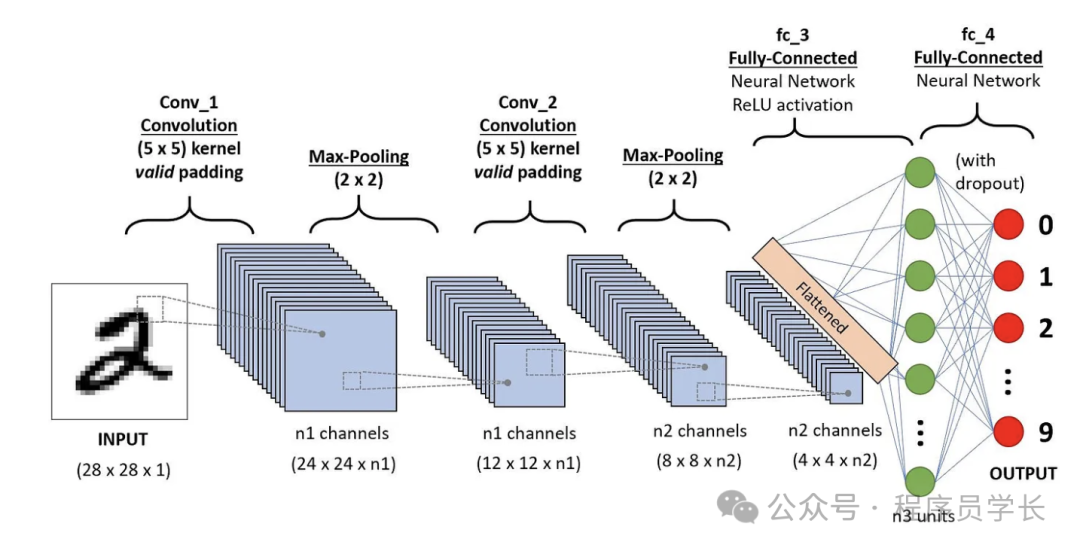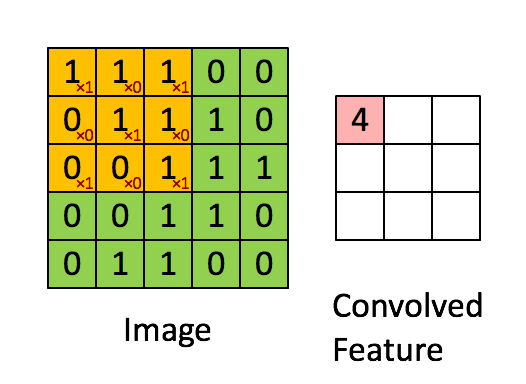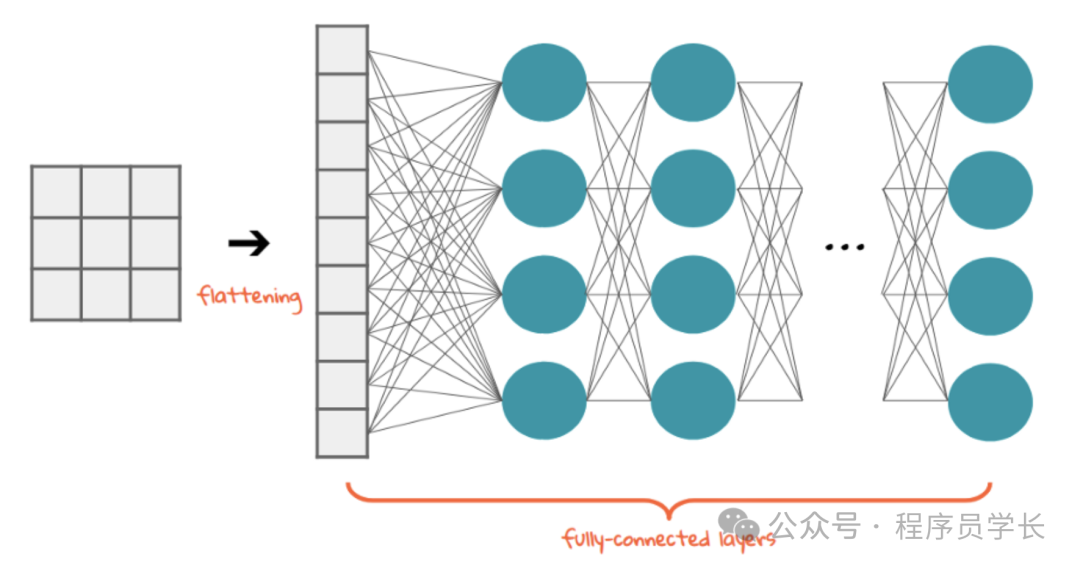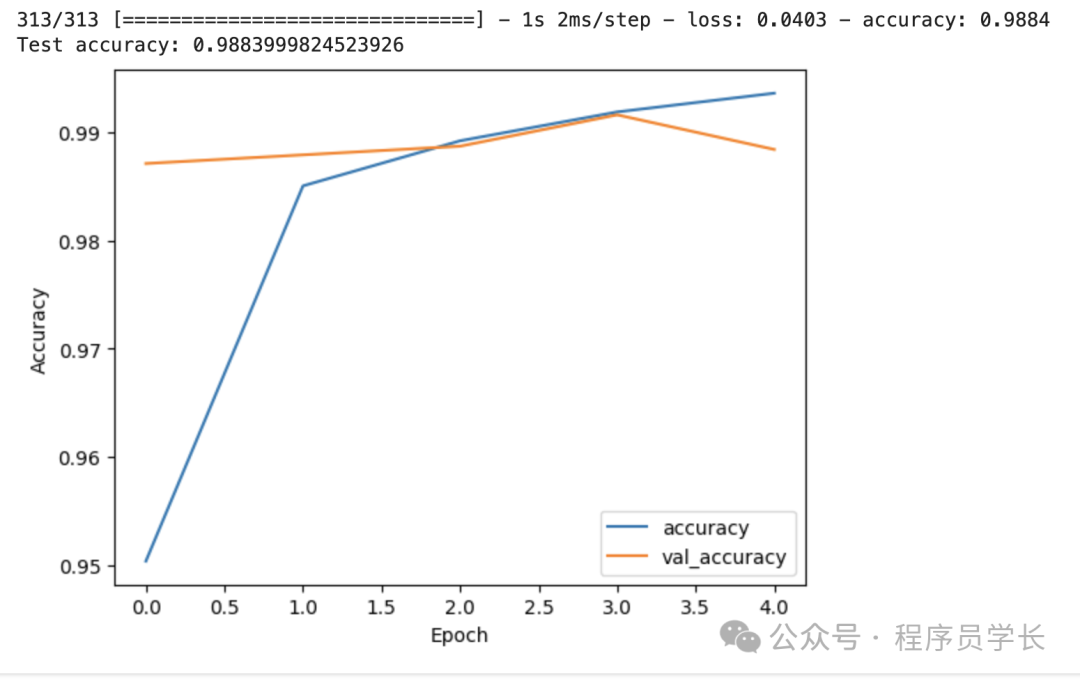大家好,我是小寒
今天给大家介绍一个强大的算法模型,CNN
卷积神经网络 (CNN) 是一类深度学习算法,主要用于处理和分析视觉数据。
它们彻底改变了计算机视觉领域,使图像识别、物体检测和各种其他应用取得了突破。
什么是卷积神经网络?
卷积神经网络 (CNN) 是一种人工神经网络,专门用于处理结构化网格数据(例如图像)。
与将输入视为平面像素阵列的传统神经网络不同,CNN 利用图像的空间结构来提取分层特征。这种能力使 CNN 在图像分类、对象检测和分割等任务中特别有效。
 图片
图片
关键组件
1.卷积层
卷积层是 CNN 的核心组件,用于提取输入数据的特征。
卷积层通过滤波器(卷积核)在输入数据上滑动,进行卷积操作,生成特征图(Feature Map)。每个卷积核负责捕捉图像的不同特征,如边缘、纹理等。
 图片
图片
- 卷积核
检测特定特征(如边缘、纹理或图案)的小矩阵。常见尺寸为 3x3 或 5x5。 - 步幅
卷积核在输入图像上移动的步长。步幅为 1 表示卷积核每次移动一个像素。 - 填充
在输入图像的边框周围添加额外的像素,以确保卷积核正确适配。
 图片
图片
以下是使用 NumPy 的简单实现。
2.池化层
池化层通常用于降低特征图的空间尺寸(高度和宽度),减少参数数量和计算复杂性,同时使特征检测更加鲁棒。
池化操作主要有两种类型:
- 最大池化:从特征图的每个块中获取最大值。
- 平均池化:从特征图的每个块中取平均值。
 图片
图片
3.全连接层
经过几个卷积层和池化层之后,神经网络中的高级推理通过全连接层完成。
这些层将扁平化的特征图作为输入,并将其用于最终分类。
 图片
图片
CNN 的执行过程
让我们通过一个例子来了解 CNN 如何处理图像:
- 输入图像
考虑 32x32x3 RGB 图像(高度、宽度、深度)。 - 卷积层
对图像应用多个过滤器(例如 3x3),从而产生多个特征图。假设我们使用 10 个过滤器;输出将为 32x32x10。 - 池化层
使用 2x2 最大池化,步长为 2,以减少空间维度。输出将为 16x16x10。 - 额外的卷积和池化层
根据需要重复卷积、激活和池化操作。 - 全连接层
将最后一个池化层的输出展平(例如,8x8x10 变为 640 维向量)并将其连接到密集层以进行分类。 - 输出层
应用softmax函数获取类别的概率分布。
下面我们将使用 TensorFlow 构建一个简单的 CNN,用于 MNIST 数据集(手写数字数据集)的图像分类。
首先我们导入必要的库
然后加载和预处理数据
构建 CNN 模型
编译并训练模型
评估模型
 图片
图片












































